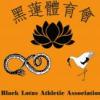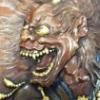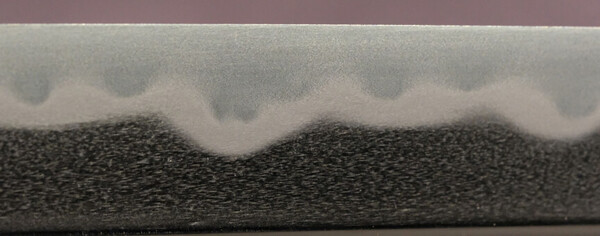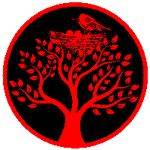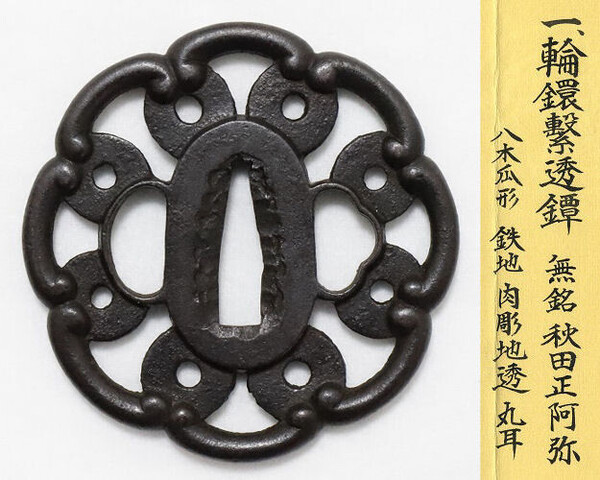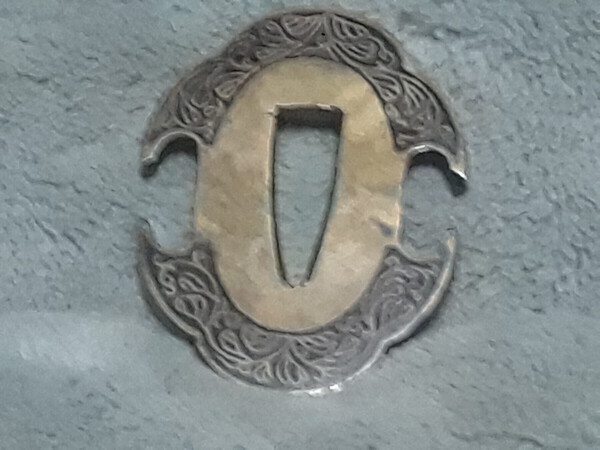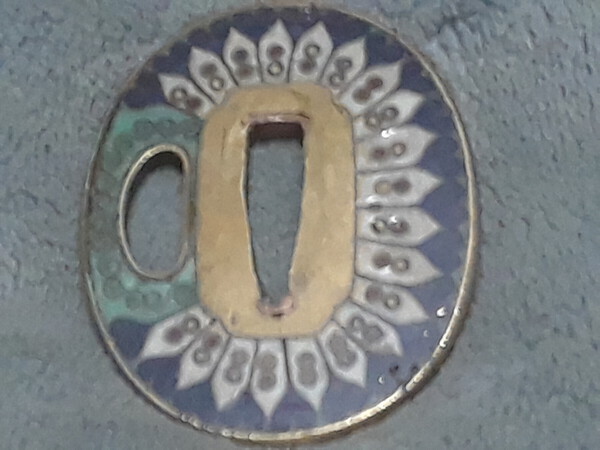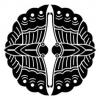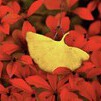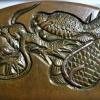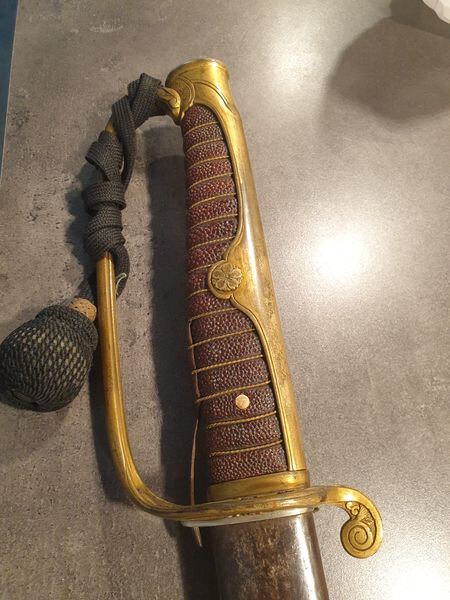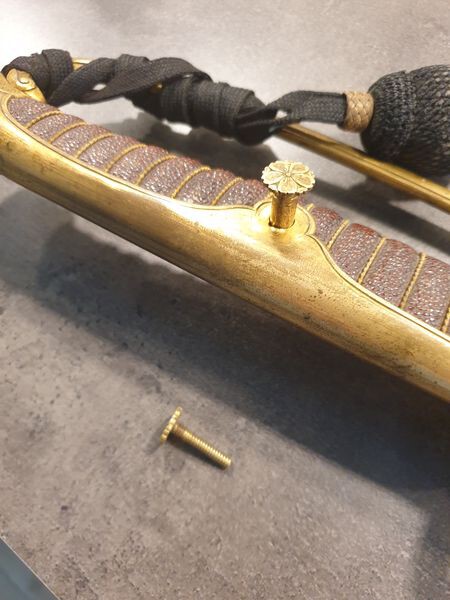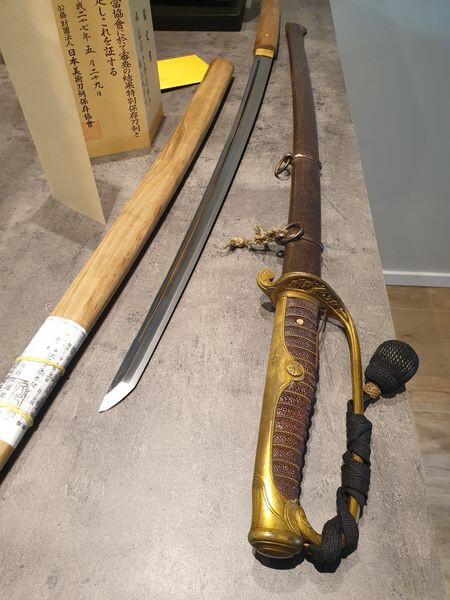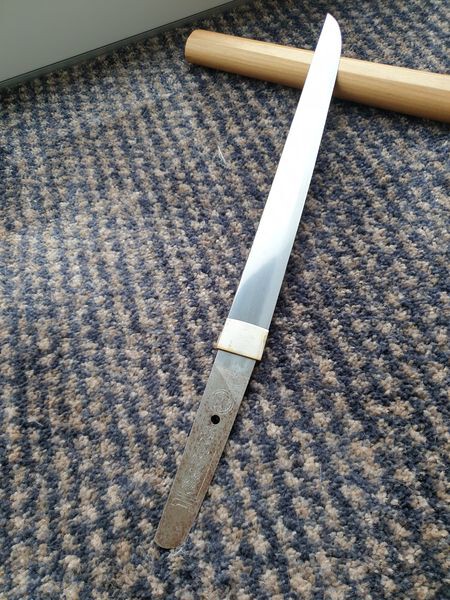Leaderboard
Popular Content
Showing content with the highest reputation on 07/24/2021 in all areas
-
At the San Francisco show coming up will be a OUTSTANDING display for study put on by the NBTHK-AB of Ichijo and Nagatsune fittings it will be the best display ever put on in the USA of there works I believe all of the Nagatsune are in his sketch book and the most of the Ichijo in the original boxes from Ichijo when he made them for the original buyer If you are a Kodogu person or just want to see the best of the best, come the the show and see the display as a grouping like this will not be put together again !!!!!! Fred Geyer3 points
-
Kato Kanefusa, real name Kato Koichi, also known as 23rd generation Kanefusa as well as Fujiwara Kanefusa. He was trained by Kato Yosinosuke Jumyo. Kanefusa was rated as a 1 million yen smith. He made medium to high grade Showato and medium to high grade Gendaito as in this example. He won 1st seat at the 1941 exhibition. Kanefusa is listed in the Toko Taikan (TK-126), Hawleys (KAN-799, 747, 801), Nihonto Meikan (NMK-179), and Sesko’s, Sword Smiths of Japan pg 200 (see below). His work can be seen in Slough’s, Modern Japanese Sword Smiths pg 39 Additional photos: https://yakiba.com/kanefusa-23rd-generation/2 points
-
2 points
-
Dear Bob, on Item #83, I'm sure that this is supposed to be Goto Tsujo. I understand that Aoi is somewhat famous for clerical errors, and I don't know of a Goto Koju (maybe some of the Goto experts can assist here...) I've attached the Haynes entry for H5483 and you'll see that the kao is nothing alike, so I don't think that applies. Haynes has some other artists who signed Goto Mitsutoshi, but they used different kanji. Goto Tsujo used different names and even different kanji for signing Mitsutoshi, but he also used the ones on your tsuba. Most Japanese sources read that Tsujo kanji combination as "Mitsutoshi" but there is some scholarship that says that the Goto called him "Mitsunobu" instead of "Mitsutoshi" (Haynes does not adopt that reading). I've attached some of the mei and kao from Sesko (who does read it as Mitsunobu). Notice he has the same sosho for "Goto" and the same kanji for "Mitsunobu" (Mitsutoshi) as on your tsuba. Also notice that in one of the actual mei examples (circled), Tsujo omits the lower left Mitsu "leg" just like the mei on your tsuba (that's rare). Finally, your photos are hazy in the area of the kao so it's a little hard to compare, but I think that you will find that one of the circled kao fit your signature. Please let us know what you think in hand. NOT YOURS:2 points
-
I'll be happy to post stuff there as it's identified and either gets offers or valuation. Of the 14, six interest me, but I can probably only justify two. The others are for sale, payable to his estate.2 points
-
2 points
-
Item No. 83 - Tsuba in Shakudo 7.60cm x 7.11cm x 0.59 cm at centre , 0.38 cm on rim Repeating punched pattern on heavy shakudo plate , signed Goto Koju. Good quality workmanship , as you would expect from this school , with all punchmarks in nigh-on perfect alignment. Bought direct from Japan , 10 years ago.2 points
-
Tempo ‘Daishi’ (大士) 95 x 90mm £280 Very large iron plate with excellent surface treatment and a rich chocolate brown patina. It is unusual that this tsuba does not have any kozuka of kogai ana, and as such remains unaltered from the original plate. The hot stamp bears the characters for 'daishi’ (大士) which can be read to mean 'great warrior'.1 point
-
I got out some Ainu knives for a presentation at a local museum and thought there might be some interest in them here. I am not sure these are "Japanese" blades but they ARE related. Indeed, I have formed three collections of Ainu objects, but I've given two of them away and formed this bunch only because they were there. Most of the "blades" are Japanese (or other "Asian') cutlery, but please take a look at the bear face bag that was fitted out with a "netsuke' that we collectors see as a very ordinary iron tsuba. Thank you for looking! Peter1 point
-
1 point
-
To state the obvious, the left column of the label reproduces the characters on the tsuba.1 point
-
I know of some of the pieces in the collections being used for this, and this would be a high level exhibition even in Japan. Some things that will be shown will be shown for the first time. I haven't been to the USA for 5 years but this exhibition makes me want to get on a plane. Good luck.1 point
-
1 point
-
The nanako are later edo using one of the macro punches developed by then. The beads will probably be larger, full rounded, and consistently placed. As to an attribution: I would be looking closely at every chisel stroke of the cranes and form my opinion from that. That require some level of magnification beyond your Iphone is currently producing. By late Edo, that could be quite a number of schools- but I am getting a lot better at distinguishing them these days. Like getting to Carnegie Hall: practice, practice, practice. Curran1 point
-
Try 大原真守 Ohara Sanemori Whoever incised these characters probably got low marks at school in brush-writing, calligraphy. ”Good try but needs more attention. 3/10" Later. I had a look in Fujishiro under Koto, and there is an example Mei on p.446 there which looks rather similar. In light of this I would like to amend my comment above. Some smiths had great writing, some didn't, and some got someone else to cut their signature for them.1 point
-
Ed, Yes I will have session with the camera. You will have to excuse me for a couple of days as I am now inundated with son, nieces and associated bodies staying. Trying to entertain and feed the assembled mob is demanding enough. Chris, I was looking at your tsuba and trying to figure out the symbolism when it occurred to me I had seen something similar on an uchiwa. I think the filled and unfilled dots might represent auspicious and unlucky days of the month. Ian1 point
-
Peter, very interesting collection indeed, thanks for showing it. I'm instantly reminded of a battered, mumei hirazukuri blade I have that Mother wouldn't have in the house. A mate close by has another blade of the same sort. I'm motivated to get these together and post them here FWIW, but don't hold your breath. We're still in lockdown here for a few more daze and I haven't had my second AZ shot yet. BaZZa 'Gunnadoo' Thomas.1 point
-
Ichi - Hizen kuni Dewa (no) Kami [Yukihiro] 一肥前国出羽守[行広] Personally a fan of this side branch of the Hizen line1 point
-
Definitely anyone here has first dibs, and discounted or free shipping.1 point
-
I think its value lay in it being an artifact. I would leave it as it is and use it for educational and study purposes.1 point
-
Awaiting a polish and will post some hopefully lovely pics. Might be some time until then.1 point
-
Thank you ronnie for the picture of the book cover. I was able to locate the required information over at the National Diet Library. It is a a small book of only 71 pages that was published in 2010. The characters 継承 can be translated as succession, accession, or inheritance. Jingū chōkokan nōgyō-kan 神宮徴古館農業館 [Jingū History & Agricultural Museums]. Gendaigatana no hyaku-nen: Fukkō to keishō 現代刀の100年: 復興と継承 [One Hundred Years of Modern Swords: Revival and Succession]. Ise 伊勢: Jingū chōkokan nōgyō-kan 神宮徴古館農業館, 2010.1 point
-
Ed, Obviously there was a vogue for these decorative enamel fittings. My first impulsive though was that they were probably popular among the merchant class, and they possibly were. What I have not mentioned so far is the quality of the kojiri on this sword, nor that of the blade. I attach an image of the kojiri that is of silver, only partially inlaid into the lacquer so that it is in relief. Applying lacquer into the spaces between the stalks and leaves and then polishing it must have been a nightmare job. Ian Bottomley1 point
-
Good for you Chris - maybe we are archaeological collectors? Even worn out pieces can be worthwhile they tell a story and at least you can figure out what happens if you neglect maintenance! I think you are on to something with the cotton towel, guards do come up better after a good going over with cotton. Anyone know if cotton was a fabric available in Edo times? I find silk does not give as good results. John J. - I am not sure I will have a few decades - let alone trousers - would continence pants work? Heck just buying it could be a symptom of dementia setting in! But I would rather buy a rust bucket than a shiny new fake.1 point
-
Saw something today that reminded me of this old article - originally published in the newsletter of the Northern California Japanese Sword Club - note many of these swords were included in the recent exhibition; Reborn. Fire Osaka Okaji, Edo Okaji 大坂大火, 江戸大鍛冶 Thomas C Helm @San Francisco in California In a land of paper and wood homes fire was a dread scourge from earliest times, there were great fires in the old capitols of Nara and Kyoto. There were many notable fires during the Heian period and one could argue that it was fire that brought an end to that elegant age. It was 1177 the year of Angen when the record storehouse at the imperial palace burned down with nearly all its precious records inside effectively erasing 400 years of culture. This was followed by great fires in 1180, 1182, 1188 and 1208. The centre of power shifted from Kyoto to Kamakura and as before fire continued to follow earthquake and battle all throughout the Kamakura and Ashikaga shogunates. Toward the end of the age of war Oda Nobunaga sealed his hold on fame or infamy with the destruction of the temples on Hieizan in 1571, followed by the immolation of the Ikko in 1574, and the burning of the Honganji in 1580 before he himself died surrounded by flames at the Honnoji in 1582. In the Edo period fire continued to plague the great cities of Japan prompting one observer to note “… and earthquakes and fires are the flowers of Edo.” It’s said there was a fire somewhere in Edo every week and a great fire once every three years. Great fires were those that consumed more than 15 hectares of land. Some notable fires include the following; The great furisode fire of Meireki 明暦 3 (1657). One of the greatest fires to attack Edo and one of the greatest ghost stories ever told as well. Seems a young maiden died an unhappy death by her own hand, her poor family sold off her good kimono. The new owner, though also a young woman died soon after amid strange circumstance. The kimono was sold again and again the innocent who received it was soon dead. When a third girl died and it was seen to be connected to the unlucky garment it was returned to the family. In an attempt to purge the spirit of the suicide a priest was called in, in performing his exorcism he made to destroy the gown. However as he started to burn it something went terribly wrong and the resultant fire destroyed half of the great city with tremendous loss of life. These fires prompted the Bakufu to organize fire brigades, the houses of the Daimyo did the same. As these were made up of samurai they often would do little to aid the ordinary citizens who were threatened with fire and so the neighborhoods organized their own fire brigades; Hikeshi. In Tenna天和 2 nen (1682), a teenaged girl, Oshichi, caught a glimpse of a young acolyte while sheltering from a fire in her local temple. Hoping to see him again she set a fire only to see it burn wildly out of control. The destruction was incredible and her culpability undeniable. Whether she saw her would-be priest ever again is unknown. Genroku 元禄11 nen (1698) brought the great Chudo fire and not long after came the Mito-sama Kaji. So called because this fire started within the Mito lords Edo mansion. Because of the situation of the mansion the resultant fire destroyed nearly every Edo home of the great lords of Japan at the time, more than 300 in all. Meiwa 明和 9 nen brought the Meguro Gyunin-zaka fire followed in Bunka 文化3 nen by another great fire and in 1855 (安政 2) perhaps the last great fire of the Edo period which came amid tremendous political upheaval and was the result of a great earthquake. Of course you may note a gap in my history, this is because the greatest fire in history was probably the great furisode fire of Meireki mentioned above. However as it pertains to the world of the Japanese sword there can be only one great fire and that is the conflagration of Osaka castle in 1615 at the conclusion of the Summer Battle. As I am sure you know Ieyasu had done all that he could to weaken the defenses of what many considered the strongest fortress then in existence in Japan, when he filled in both moats at the end of the Winter Battle. He wooed supporters away from Hideyori and frustrated the plans of his mother, Yodo-dono at every opportunity. He carefully chose his actions so as not to anger the old comrades of Hideyoshi and when the time was right took to the field to destroy the Toyotomi once and for all. With 100,000 troops to garrison her fortress, her own troop of specially outfitted female guards, a years worth of provisions and a horde of gold never before seen in the history of the nation, Yodo may well have felt her position secure within the tower of Osaka. None of it was to last though, in spite of valiant efforts on the part of her army, the Western troops began to make breaches into the castle on the 8th day of the 5th month of the first year of Genna (元和1615) after a siege of nearly a month. Traitorous hearts seeing the tide turning then set fires here and there turning the castle into a furnace. The main donjon still stood though and held, at a signal, when it was clear all was lost, the Osaka troops themselves set fire to the tower. Somewhere inside Hideyori assisted by Mori Katsunaga and Yodo-dono assisted by Ujiie Doki, took their own lives, along with 13 of her ladies and 23 of her generals, their bodies to be consumed in the flames. That of course was not all that was consumed, besides the golden treasures that Hideyoshi had amassed, mighty swords, famed blades from the age of Yoritomo, were also lost. The Kyoho Meibutsu Cho a compilation of the best known works of the era (Kyoho 享保1716-1735) has a section listing 77 famed swords lost to fire, some to the Great Fire of Meireki but most from the collection of the Taiko lost in the razing of Osaka castle. When the damage was all assessed on that long ago day the losses on the Osaka side included some 14, 534 men along with blades by Yoshihiro, Yoshimitsu, Munechika, Sadamune and Masamune and others. Enter Shodai Yasutsugu, who was charged with re-tempering those of these masterpieces that were recovered. His close association with Ieyasu gave him unprecedented access to the finest swords in Japan, including those captured from Osaka. Almost immediately he was producing copies of the famed works of the Soshu school, which were looked on with special favor by Hideyoshi himself. Sato Kanzan tells us “When we say copies (utsushi-mono) it usually has a negative ring, for many it is a polite way to say fake, however this is not the case with Yasutsugu. He always included a bit of his own personality in his copies and his signatures, his soe-mei, always made it clear these were works made with the best of intentions.” Among the works he copied were the following; 海老名古鍛治宗近 - Ebina Kokaji Sanjo Munechika 若江正宗 - Wakae Masamune a tanto so called for the site in Osaka where it was recovered. 獅子貞宗 - Shishi Sadamune, “the lion” by Sadamune of Soshu あたき貞宗 - Ataki Sadamune, also by Sadamune of Soshu 親子貞宗 - Oyako Sadamune, “mother and child Sadamune” (fig.7,8 and 9) 鯰尾吉光 - Namazu-wo Yoshimitsu, the “Catfish tail,” by Toshiro Yoshimitsu (fig.5,6) 一期一振り吉光 - Ichigo Hitofuri Yoshimitsu, his one and only tachi, this translates as “one life one sword.” Also the work of Awataguchi Toshiro Yoshimitsu (fig.1,2) and among those few not lost to fire at Osaka; 松竹貞宗 - Shochiku Sadamune, named for the Plum and Bamboo horimono. (fig.10) 切り刃貞宗 - Kiriha Sadamune, a wakizashi with shinogi close to the ha. 骨食吉光 - Honebami Toshiro, or the “Bone-cruncher,” by Yoshimitsu. (fig.11,12 and 13) Shodai Yasutsugu made many copies of famous works and seems to have taken quiet a bit of inspiration from the early masters, the nidai also made a number of copies but not as many and the sandai made absolutely none if Sato is to be believed Although we do know that the sandai did do the re-temper on the Honebami Yoshimitsu when it was burned in the great Meireki fire. The structure of Osaka castle built by Hideyoshi was burned in 1615 but the battlements remained. The Tokugawa re-dug the moats and rebuilt the donjon and it stood for another two hundred years only to be destroyed in the restoration wars. Of course at that time there was no great loss of life and no treasures other than the castle itself destroyed, as the Choshu samurai that lay siege to it in 1868 gave all occupants the chance to evacuate before razing it whole with purifying, terrible, inexorable, fire. Kaji-ba 火中kachū in the fire 火先hisaki direction in which the flames are spreading 火宅kataku house on fire, world of suffering, the mortal realm 火災kasai conflagration 火事見舞いkaji mimai sympathy visit or gifts after a fire 火事場泥棒 kajibadorobo (火事ドロkajidoro) thief at a fire 火事場kajiba scene of a fire 火除けhiyo(ke) protection against fire 火柱hibashira pillar of flames 火達磨hidaruma mass of flames, or a person engulfed in flame 火足hiashi the speed of a spreading fire 火移りhiusturi catching fire 火勢kasei force of the flames 火炎hono-o or kaen fire and smoke 小火shōka, boya small fire 山火事yamakaji forest fire 天火tenka fire or natural disaster caused by lightning (Tenpi – oven) 引火性inkasei flammability 失火shikka accidental fire 付け火tsukebi arson 防火用水bōka yosui water for putting out fires 近火kinka, chikabi a fire in one’s neighborhood 自火jika a fire starting in one’s own home 拝火教haikakyō fire worship, Zoroastrianism 怪火kaika fire of mysterious origin 飛び火to(bi)hi flying sparks, leaping flames 急火kyūka a sudden fire; a nearby fire 烈火rekka raging fire 舟火事funakaji fire aboard a ship 貰い火mora(i)bi catch fire (from a neighboring burning building) 魚火isa(ri)bi, gyoka fire for luring fish at night 類火ruika a spreading fire, first mentioned in the Taiheiki Fig.1 Ichigo Hitofuri from Kotoku Katana Ezu Fig.2 Ichigo Hitofuri Utsushi Fig.3 Namazu wo Yoshimitsu from Kotoku Katana Ezu Fig.4 Namazuwo Yoshimitsu Utsushi Fig.5 Ebina Kokaji Munechika from Kotoku Katana Ezu Fig. 6 Ebina Kokaji utsushi Fig.7 Oyako Sadamune from Kotoku Katana Ezu Fig.8 Oyako Sadamune Utsushi Fig.9 Oyako Sadamune Utsushi Fig.10 Shochiku Sadamune Utsushi Fig.11 Honebami Toshiro from Kotoku Katana Ezu Fig.12 Honebami Horimono Fig.13 Honebami Utsushi *Yasutsugu images from Yasutsugu Taikan by Sato Kanichi 昭和35 **Oshigata from Kotoku Katana Ezu by Hon’Ami Kotoku 文禄3 (1594) Fire copy 6.pdf1 point
-
Aoi did another diabolical job on the description. This time, the transcription of the sayagaki in Japanese is ridiculous, and the English translation is no better. To summarize, Tanobe-sensei's sayagaki states that while most old sources name Tōchika as the son of Tsunetō (placing him at the tail end of the Heian period), this sword has the traits of a mid-Kamakura sword.1 point
-
Finally, my book came out on Amazon this morning. Amazon only sell softcover book (this is what I was told?) and Ebook. Hardcover books are sold by publishing company I used, "Alpha Book Publisher" and other few book stores. But Hardcover books are not ready yet, maybe in 10days or so. The Publisher said books are sold on European Amazon also. Anybody in Europe, please let me know if you see it on European Amazon. Or, European Amazon and U.S. Amazon is the same, I am not sure. Japan Amazon is separate. Thank you very much for all your encouragement and support. Yurie1 point
-
It is stories like this that remind us why some blades get separated from their papers, koshirae, etc. Things like this happen and not everyone is lucky enough to have someone step in and assist with keeping things together.1 point
-
1 point
-
Asking dealer's opinion on another dealer is redundant. What you'll get is: The papers are fake. The sword is fake. The polish is fake. The images are fake. The store is also fake. ..... but on the other hand I might just have what you are interested in. The worst thing - sometimes such advice is true. On this blade - its within a typical price range for TJ early Bizen work. 150-225 or so. Its not the earliest, in my (very personal and erroneous opinion) its more along the lines of Ichimonji (Fukuoka?), but it could be that in some 17th century publication Tochika is marked as ko-Bizen and all thus signed work is now labeled as such. Its Japan. Which does not detract from it being very active, passionate and interesting work, in good polish and decent condition, not too often seen and quite early. If you like the style - go for it. Its a great blade.1 point
-
Well, Michael This background is very helpful: you seem to like old, historic items with proved or provable history / provenance. I am with you personally on Kamakura, even though I venture either side too (Heian and Nanbokucho). Bear in mind that with Kamakura and older, you often have to compromise on condition issues (eg here there are some lamination seam ware on one side of the hamon, which I personally can live with, but some members who prefer younger swords, eg Shinto etc, would not accept). If you are not focused on a certain school or schools and not fixated on how a blade looks like, as long as it is in a good condition, then you could go for any blade that ticks the boxes mentioned above. Personally, I like this Ko-Bizen Tochika a lot, but that is because I like Bizen. What the bonus features here are: the preserved mei, the highly rated provenance and Honami certificate. I shall leave aside the tachi koshirae as it is nice but not super nice. The Honami who appraised it is the highly rated Kojo (big bonus) and the family is an offshoot of the very famous Matsudaira clan (bonus). The sword description in the Juyo paper talks of fabulous choji and excellent deki, so the judges did think rather highly of the sword. As mentioned before, they compare it to Hatakeda (the founder, Moriie, had such glamorous kawazuko choji) and Saburo Kunimune (another Bizen great with expressive hamon). Such comparisons are also a subtle nod to the reader that the blade is from the early 1200s perhaps (they do mention that the blade does not date later than mid Kamakura). The smith himself is not very famous but this blade seems to be one of his tour de force creations. He does not have many blades left to us but those that remain (fewer than ten) have JuBI and JuBu grade items among them and are split between suguha and flamboyant and active hamon. Honma sensei, in his book Kanto Hibisho, speaks favourably of this very sword and compares it to the JuBi and JuBu examples. Fujishiro has also included it in his book. So, clearly this is a famous, well researched and well documented blade that has been reviewed by Honami Kojo, Fujishiro sensei, Honma sensei, the NBTHK shinsa panel, Tanobe sensei (if I were you, I would get his sayagaki of this sword professionally translated by Markus Sesko) etc. Well, it does not get any better than that documentation wise. At this level, you need to trust the dealer as you are not seeing the blade in hand. The photos are all right but sometimes obscure certain details. The oshigata Tsuruta draws for sale are not usually too precise and tend to exaggerate some activities but of course oshigata are works of art and interpretation. So, do allow for some condition issue that might pop up when you get the blade but again I suspect for the age of the blade it will be acceptable. Ask for a video of the sword, ask for daylight photos of the sword, ask for someone you trust to review it in hand if possible. But anyway, with this sword, you get a lot of research done by others in your behalf. Personally, I am surprised that such a caliber sword ended with Tsuruta. But anyhow, do your own research with some of the pointers above and sleep on it.1 point
-
Hi Michael, Have you thought about making contact with this gentleman? https://yuhindo.com As well as selling some top class items he has some interesting views on collecting (have a read of his blog) and can no doubt advise on building a collection or a one item collection if that’s what you want.1 point
-
Personally, sometimes struggle with these old blades. Made so long ago and seen so much wear over the years that it shadows the blade it once was. Changes along the hamon, weaker in some areas than others, distraction for me and would probably end up getting a little bored. (at that price) As always, horses for courses.1 point
-
Namesake / Michael My opinion is already in the other thread. I have looked at many Ko-Bizen, own one, etc. This blade is very good BUT you must know what you are buying before venturing into something like that. If you are asking for [moral] support and views on the blade and others justifying to you whether you should buy it, it seems to me you are not ready yet to swim in these [deep] waters… if you truly have such funds, then pause, look around, compare and decide what type of Ko-Bizen (or whether it is Ko-Bizen you desire in the first place) you are after and then by which smith. And then perhaps decide whether you want it with provenance and koshirae or not. Someone buying at such level would need to evaluate the smith, condition, provenance, length, other bells & whistles etc etc. You would need to know what you want / expect of the blade and whether it is meeting your requirements (eg do you like the hamon and want flamboyant choji, or does it need to be an “old blade”, do you want a blade with a mei etc).1 point
-
Unfortunately nihonto community has only two skills: a. Reading papers. b. Finding smith's name in a database.1 point
-
Item No. 80 - Iron tsuba with shibuichi and gold - 8.05 cm x 7.38 cm x 0.38 cm Subject of pine tree , stream and moon , made approx. ten years ago by Ford Hallam A strong , stately pine tree partially depicted with branches and needles . The plugs shaded to represent the moon , reflected in the calmly flowing water . Overall a contemplative piece , with a quiet , soothing feel that evokes a similar response from the viewer , especially when held in hand. This tsuba was the first entered into the annual NBSK competition to win gold for a non-Japanese maker.1 point
-
There was a amazing set of silver plate menuki with , gold dragons, some shakudo on the dragons, and copper tounge, from Mark C.... if only I had the money. Brought my Nephew, who had a good time, here he is holding a monster he liked. Great show, with great feedback to my questions, learned quite a bit this show.1 point
-
According to Richard Fuller ultra rare " first pattern Warrant Officer grade Mountings,having plain backstrap, and pierced Guard. early pattern army kyu gunto use a sakura screw through the Hilt side ears plus a Mekugi peg, if a hand forged blade is used... In this case a first Gen. "Omi no kami fujiwara Tsuguhira", with TBH-Hozon, Ubu Ha and Bohi, sure a real old familie treasure....1 point
-
1 point
-
The most unusual we have ever seen!!!! A high class long Gendai Tanto, used as a mobile shrine..... The Mon side has a memorial tablet known as "eihai". It appears that the content was written by a Buddist monk and is virtually a chant taking elements from the monks name and temple, plus the posthumous name given to the deceased that must also include one Kanji from his real name,( in this case"tetsu"). This posthumous name is known as a "kaimyo". The date is the death of the officer. The other side has the rank and the real name of the dead officer, with a request, that his spirit resides in this blade. "The swordsmith is not mentioned,but presumably it was made after the date specified,according to Mr. Han Bing Siong sand and Ogasawara san's opinion, cleary made by Hori Toshihide. The Mon represents the dead mans familie. It is that of the Nakamura, Mizuno and Okudaira familie....... The tablet inscriptions read as follows.: "CHUSEIIN" (Name of the monks temple) KOYO JUNDO ( spiritual name implying the deceased was a matyr) "TETSUSHIN" (posthumous name) "KOJI" (Buddist layman) "SENSHI" (death in action. Showa 10 8 nen 9 gatsu 2 10 1 Hi (21.day of the 9. month in the 18. year of showa i.e. 21.september 1943. Rikugun (army) "SHUKEI" ( Intendance, accountant) "TAII" (1st Leutnant Kubota) "TESTSUO"( officers name) "RYU" (remain in) "KON" (soul spirit) "TO" sword, ie. Tanto. Army Intendance 1. Leutnant Kubota Testsuo, his spirit, soul, remain in this blade........1 point
-
I'm back! The Tadayoshi did indeed make many styles of Hamon ---and the world recognised signature pieces were suguha. But not just any suguha….THE suguha. The forgers jumped on this bandwagon, and anything with suguha was faked into gimei Tadayoshi with varying degrees of signature quality from that akin to a 2 year old drawing in sand with a chopstick, to the Hizen Kaji itself adding the signatures. Some rare genuine pieces are in the more flamboyant choji midare, gunome etc and I suspect were special orders. The Oshigata books are full of them, but they rarely surface in the flesh, and when they do, they command very high prices and great care is necessary. The bulk of the works we see are therefore suguha- and in really nice suguha with some fine, often missed, ashi sometimes (4th and 5th if I recall correctly), and nijuba (2nd Gen), bright nioiguchi (2nd gen), nie deki in dark nie (1st gen) , flawless (3rd Gen)and so forth. Since the wilder hamon are buried deep in collections and rarely seen, the tendency is to assume they are gimei when they do show up. If you see a suguha sword, most jump straight to the Tadayoshi and if the hamon is lifeless, then clearly NOT the work of this school. The reality is that far more suguha gimei are out there, and unfortunately, some 85% of the overall Tadayoshi swords/oshigata/images I come across are in my opinion outright gimei, maybe 10% are in the 'not sure' bracket, and 5% have me drooling. The 10 % is the grey ‘floating world’ of gimei and all sorts of theories expound, but they can be really, really good. In short, its not JUST the signature, but the message the whole sword puts out. No I am not high! What I do when I see the wild hamon type swords is to put a great big question mark in the equation. In fact, the best approach is to not have any sword fever at all, and start with a gimei approach, the aim being to find signs that prove it is genuine and try to take the hoarder/gold fever attitude out of the equation as the heart beats faster. So the question is.... is this sword genuine. Since I presume no-one bought it who commented, it is now an easy option to say probably gimei, feel good about it and move on, but I don’t think that does this sword justice. I once saw an old collector at the SFO show years ago sit for two days behind the dealers table with a single sword he was contemplating buying – just getting to know it and listen to it he said! The sword, from what I can see (which isn't much) , doesn't have any obvious flaws and looks nice quality with a good colour to the steel. It gives an impression of quality, not junk. In no particular order...... The almost O-Kissaki and boshi is great with a Hizen type kaeri (I think that is what is there- an even tightish turnback without the wavy midare carried into the actual turn itself?). It’s a stoutly (very stout) proportioned sword, with an unusually short nakago and a signature that fills the nakago…… almost tsunobi tanto style --- so if it is only JUST a wakizashi in cutting length, then that's good news because there seemed to be a penchant for tsunobi (oversize 1 shaku 1 sun) tanto within this school (ie you don't often see small tanto, but you do see technically short wakizashi over 1 shaku, with tanto type proportions – tsunobi tanto), hence the rather short nakago ** (more later). Koshirae is possibly changed but ---glimpse of a Hizen Namban type of tsuba, a glimpse of lovely menuki in quality shakudo and gold, a glimpse of a silver dragon kanamono on the dried up saya ripe for restoration. Kind of points to a higher value owner than a hunter killer impoverished Samurai. Onto the nakago ----- well the nakago shape is good for the early generations, rounded V shaped nakagojiri, yasurimei are good quality, patina suggests maybe early Edo, if you go with a tsunobi tanto, then signature size and placement is kind of Ok. So I am thinking Hizen kaji work and haven't really seen anything to say it isn't yet. I love the powerful blade shape, and the short nakago maybe significant as the nakago wouldn’t be long enough to chop through your Xmas Turkey or opponents thigh bone in one stroke. The all important Mei. What I don't like: One chisel stroke in the Zen kanji runs into the nakago-mune. Hmmm. I would have been more comfortable if the mekugi-ana had pieced the left chisel strokes. Kind of suggests that the mei was added AFTER the mekugi ana and squeezed into place. I don't know what they did in this respect, but was told by an old Japanese sword master a few years back that the sword was a utility weapon, and was made into a sword after the smith made it. So you would expect the entire sword blade including the signature to be made first, and the hole placed later by the person fitting the koshirae who was more concerned with fitting the tsuka than the smiths signature. Not sure on this point but it makes sense........( Incidentally he also said once a sword was chipped or damaged, it was retired from use since your life depended on its structural integrity. I would suggest that depended on the depths of your pockets. I digress but all those Sengoku Jidai battle blades we collectors hold in high esteem with hakobori he thought of as junk!). What else is not right ......Kanji spacing is a little suspect but hard to discern on an oblique picture. The bottom TADA and YOSHI seem wider apart than the upper kanji ---almost as if they are set apart from the rest of the signature to say – “look at me ---- and don’t look anywhere else”- could be the angle but it is a question mark in the process. I usually run on 3 strikes and you are out--- right now we have a (probably) tsunobi tanto shape ( ** more later) but not a problem , with a wilder hamon than usual, again not a problem but care should be exercised, possibly awkward spaced kanji (maybe a problem) and a stroke runoff the edge (problem). What I do like : the vertical stroke in the kanji Tada is exactly correctly placed for X smith. The kanji are well cut, and let’s face it, up there with the actual smiths. Whoever applied this signature was in the upper end of his knowledge of this school, whether it was a master himself, or very good faker, or ......... the kaji itself. None of the kanji are out of place for this school in terms of shape and stroke ---none that I have spotted yet! We now take a while to let this sink in before returning to the kanji, and digress a little. The same Iaido master in Tokyo told me (and who am I to doubt him), that the castles in the castle towns were also repositories for weapons. Swords were stockpiled in times of peace for times of war. Thousands of them. And significantly many/most/all? were unsigned as they were churned out by the deshi and masters for the stockpile. The finest pieces went as gifts or were sold, the rest into the stockpile – unsigned. When hard times fell upon the Samurai (1800's onwards) and the CEO (Daimyo) was looking for cutbacks --- guess where the stockpiled swords ended up! Back in circulation ... but mumei swords were plentiful and what was required were swords made, and more significantly signed, by the masters (who were now dead). Add this to the grey production lines that the Daimyo did not control , and hey presto the actual 4th Gen sword with a faux 4th gen signature becomes reality... kaji made 'gimei'. Yup --- this throws a big spanner in the sword world... thank goodness it isn't rife in the armour world! I have that sword – a 4th gen blade, with a 4th gen signature, dated 1819 (8th gen was around 14years old). Un-papered of course but everything screams 4th gen except the inscribed date (which if anyone is aware is smack in the middle of the leaderless Kaji as the 8th gen was still too young, and the 6th & 7th recently departed this world)! Back to the ** short nakago issue. The same Iaido Master also told me that if you ever see a disproportioned (in length) nakago on a wakizashi size sword, it is PROBABLY a merchants sword. Remember they didn't fight, and could not wear a katana being limited to wakizashi. They carried fine pieces, high quality, but of little real fighting use due to the shortened tsuka. There was simply no need for a larger tsuka because if the merchant ever put his hand on it, he would probably be cut down in the blink of an eye. Best not touch it! They could afford the masters works and the flamboyant hamon, and often glamorous koshirae, and wanted the signed pieces. I am also thinking no self respecting trained killer of a samurai is going to put a silver kanamono dragon on his ro-iro saya. Incidentally the old Iaido Master’s grandfather was friendly with a local Daimyo, and they both had a passion for swords (he showed me the photo at his house one evening). Anyway, the Iado Sensei inherited the old family house, and had it restored. He found over 160 swords stashed in the attic and was slowly selling them off (I bought a few over the years) including a really nice Shodai Tadayoshi leaf yari that papered– and the usual bunch of (subsequent) gimei other smiths – stick to what you know! So that is where I am at with this sword --- possibly a tsunobi tanto, (someone is now going to post its length as 1 shaku 9 sun or something, rather than 1 shaku 0 Sun 8 Bu and shoot me down ! ), possibly a merchants sword in nice koshirae, and I would give it a shot at 80% genuine 1st gen and worthy of more research -note I did not say Shinsa in Japan as the last few swords I sent a while back to the NBTHK came back Horyu (undetermined). Did I say 1st gen? Slip of the pen but it got everyone’s attention. I am still pouring over the oshigata references, but I like it and am actually leaning towards 1st gen C1621 or a good gimei (not run of the mill). The ONE kanji that really cracks the Shodai question is the top of the HI kanji and the number of strokes top right – which was 3 for the Shodai and 2 for the other smiths – and that is the kanji we don’t see here (funny old thing)! The only solace is that had there been a couple of serious bidders, it could have hit a much higher price way outside of my now wife limited retirement budget of $4 per month. Had I seen it earlier and posted this, I guess the price would have been a lot higher than the rather pitiful $2,000 (sob sob). It is not 100% gimei and IMHO worthy of further research, and despite my setbacks with the NBTHK, even (dare I say it) worthy of Shinsa, otherwise known as “passing the buck” Hopefully some insight into suguha hamon, and gimei/shoshin appraisal (of Tadayoshi). Don’t you just hate it when a potential bargain slips past in the night! Rog1 point
-
17th century publications, from which considerable portion of this detailed genealogical information is derived, for some reason are quite inaccurate when it comes to 10th, 11th, 12th, and sometimes even 13th century. Nobody knows why. Its one of the great mysteries of this world. I mean if it says the smith was active 1173-1196, you would expect him to wait for the first day of 1173, pick up his tools, and then as any decent person would - put them away in 1196, making sure his name not to be used as signature ever since. But there is a crazy theory out there, which I personally don't believe in. It might be they did not read Meikan.0 points



